
Working in pairs, students will learn about the environment, things that can harm it, and environmental justice.
- Subject:
- Social Science
- Material Type:
- Lesson Plan
- Author:
- Elizabeth Schroeder
- Date Added:
- 11/15/2024

Working in pairs, students will learn about the environment, things that can harm it, and environmental justice.

Through learning about the lives of an abolitionist and a suffragist from Oregon’s history, students will identify ways that real people fought for their rights and ways that people fight against injustice every day, highlighting that in every place and time, people have fought for their rights and freedom.

Students will learn about how popular clothes that many people buy – called “fast fashion” – are commonly made by exploiting workers in poor countries around the world to benefit people who are in power. Through discussion about labor, greed, and human rights, students will explore the harmful exploitation that helps some businesses produce goods and services at the cost of the rights and safety of workers. This lesson is designed to be combined with Grade 5 Lesson 4.

This lesson focuses on copyright and fair use. Students will discuss these concepts and then complete a project demonstrating what they learned.

In this lesson, students will examine their digital footprints, discuss the positives and negatives of having a footprint, and determine how they can most safely manage their footprints.
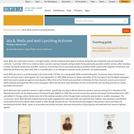
This collection uses primary sources to explore Ida B. Wells and anti-lynching activism. Digital Public Library of America Primary Source Sets are designed to help students develop their critical thinking skills and draw diverse material from libraries, archives, and museums across the United States. Each set includes an overview, ten to fifteen primary sources, links to related resources, and a teaching guide. These sets were created and reviewed by the teachers on the DPLA's Education Advisory Committee.
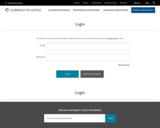
This is the fourth lesson of the series “Dealing with Dilemmas: Upstanders, Bystanders and Whistle-Blowers,” which is designed to help students think about the importance of standing up for what they believe in despite both external and internal obstacles.
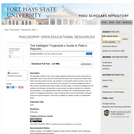
The Republic of Plato is one of the classic gateway texts into the study and practice of philosophy, and it is just the sort of book that has been able to arrest and redirect lives. How it has been able to do this, and whether or not it will be able to do this in your own case, is something you can only discover for yourself. The present guidebook aims to help a person get fairly deep, fairly quickly, into the project. It divides the dialogue into 96 sections and provides commentary on each section as well as questions for reflection and exploration. It is organized with a table of contents and is stitched together with a system of navigating bookmarks. Links to external sites such as the Perseus Classical Library are used throughout. This book is suitable for college courses or independent study.

In The New Jim Crow, Michelle Alexander explores complex questions about the criminal justice system and the history of race and racial justice in the United States.
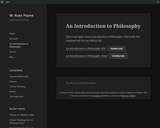
The goal of this text is to present philosophy to newcomers as a living discipline with historical roots. While a few early chapters are historically organized, the goal in the historical chapters is to trace a developmental progression of thought that introduces basic philosophical methods and frames issues that remain relevant today. Later chapters are topically organized. These include philosophy of science and philosophy of mind, areas where philosophy has shown dramatic recent progress. This text concludes with four chapters on ethics, broadly construed. Traditional theories of right action is covered in a third of these. Students are first invited first to think about what is good for themselves and their relationships in a chapter of love and happiness. Next a few meta-ethical issues are considered; namely, whether they are moral truths and if so what makes them so. The end of the ethics sequence addresses social justice, what it is for one's community to be good. Our sphere of concern expands progressively through these chapters. Our inquiry recapitulates the course of development into moral maturity. Over the course of the text, the author has tried to outline the continuity of thought that leads from the historical roots of philosophy to a few of the diverse areas of inquiry that continue to make significant contributions to our understanding of ourselves and the world we live in.

“Issues of Poverty” is comprised of four lessons with two overarching goals. First, the lessons aim to help students understand that poverty is systemic, rooted in economics, politics and discrimination. Second, the lessons provide evidence to show that poverty, far from being random, disproportionately affects Americans who have traditionally experienced oppression—African Americans, Latinos, immigrants and children.

The complexity of modern business requires a climate where virtue flourishes as opposed to venality, careerism and greed. Through theological and religious studies and opportunities for spiritual development, Jesuit business education helps its graduates (regardless of their religious or non-religious tradition) develop an ethical and spiritual inner compass. It directs them toward cooperation with all persons of good will committed to (trans)forming business in a manner consistent with human purpose and dignity. At the same time, the Jesuit trained leader is forewarned of the reality of human imperfections and social distortions evident in business history. The Jesuit perspective shares with the student a commitment to progress in hope. It rejects any utopian model of human or institutional perfection through an understanding that business institutions and economies are created by human beings and must be changed by human beings. As part of their understanding of calling graduates are prepared for self-sacrifice in order to help secure justice for all in every sphere that business touches.

How did Jim Crow function as a mechanism of racialized social control? Throughout its history, the United States has been structured by a racial caste system. From slavery to Jim Crow to mass incarceration, these forms of racialized social control reinvented themselves to meet the needs of the dominant social class according to the constraints of each era.
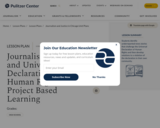
What is the role of Journalism in ensuring justice in society? In what ways has the Universal Declaration of Human Rights been violated in the world and our community? How do individuals and groups uphold the Universal Declaration of Human Rights in the world and our community?
This 15-day unit focuses on the fragility of the Universal Declaration of Human Rights and our responsibility to uphold the document. It looks at the role of the media in defining our universe of obligation and highlights the importance of underreported news stories.
In their analysis of journalism, justice and the Universal Declaration of Human Rights, students will use Pulitzer Center texts and materials to identify human rights violations in underreported global and local news. Students will analyze how individuals and groups uphold the Universal Declaration of Human Rights in the world and our community. In the culminating project for this unit, students will take civic action to address an underreported violation of the Universal Declaration of Human Rights within their community using the LAUNCH design thinking model.
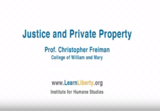
Is private property just? In this lecture, Professor Chris Feiman of the College of William and Mary presents some of the major philosophical challenges to private property.

Students discuss the characteristics of a superhero and then create their own. They reflect on what a superhero can do in the face of someone being treated unfairly and that they themselves can do what their superhero would do in that situation.

This lesson explores the effect of terminology surrounding the immigration debate.

The aim of this subject is to acquaint the student with some important works of systematic ethical philosophy and to bring to bear the viewpoint of those works on the study of classic works of literature. This subject will trace the history of ethical speculation in systematic philosophy by identifying four major positions: two from the ancient world and the two most important traditions of ethical philosophy since the renaissance. The two ancient positions will be represented by Plato and Aristotle, the two modern positions by Immanuel Kant and John Stuart Mill. We will try to understand these four positions as engaged in a rivalry with one another, and we will also engage with the philosophy of Thomas Hobbes, which offers a bridge between ancient and modern conceptions and provides a source for the rivalry between the viewpoints of Kant and Mill. Further, we will be mindful that the modern positions are subject to criticism today by new currents of philosophical speculation, some of which argue for a return to the positions of Plato and Aristotle.

In 1957, Little Rock African Americans made their city the most significant test case for the United States Supreme Court’s 1954 and 1955 Brown v. Board of Education rulings.

This series of lessons commemorates the integration of Little Rock Central High School in 1957. One lesson features the biography of Daisy Bates, a leader of the desegregation crisis. Another focuses on the nine African-American youths who risked their lives for equality. The final two lessons examine how school integration affected the Little Rock community.This lesson focuses on questions of justice and the role youth have played in social and political movements. By reading a combination of primary and secondary sources, students will learn how the Little Rock Nine came to play their important role. These teenagers’ participation in school integration stemmed not from the prodding of the parents or activists, but from within themselves.